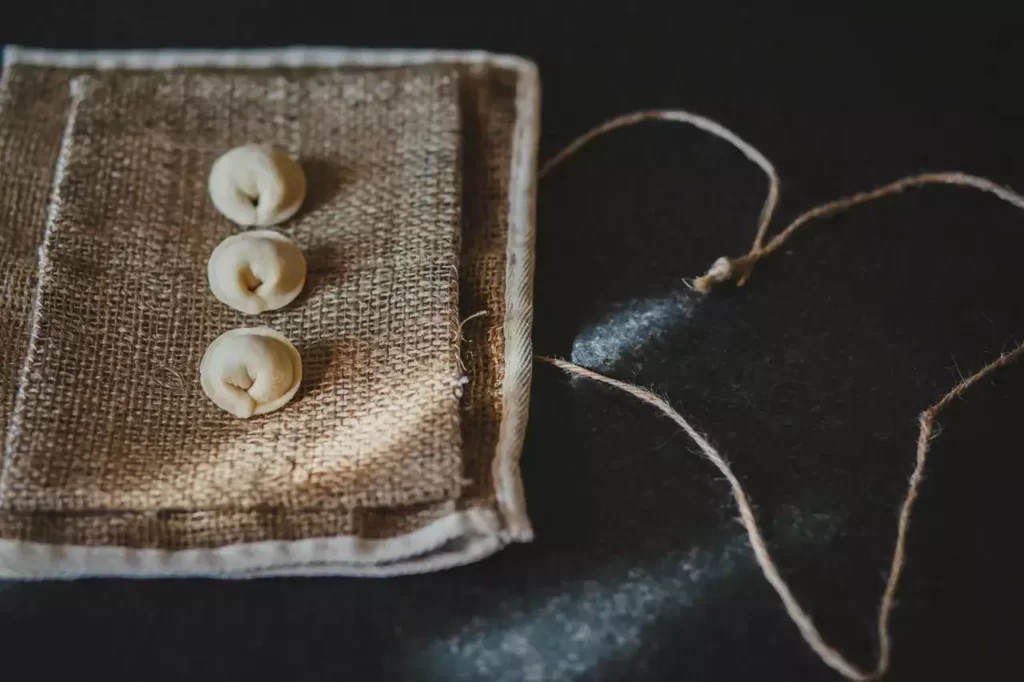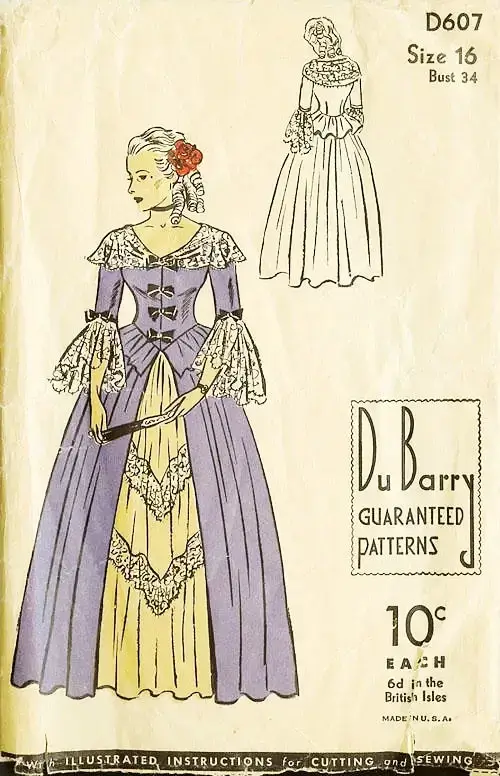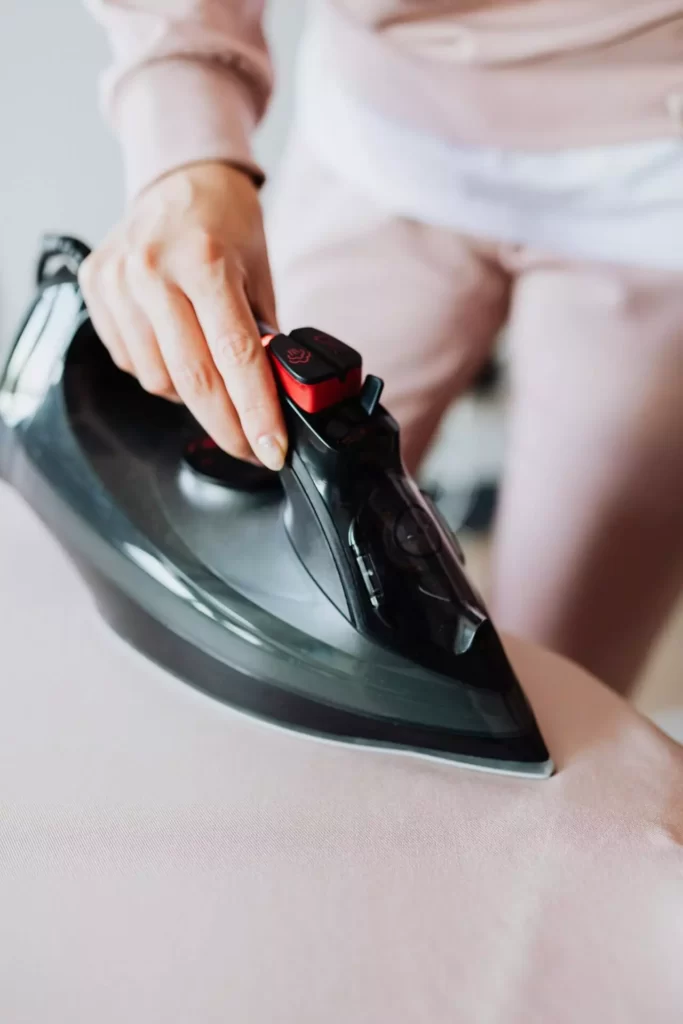Sewing is a creative skill. You already know the BASIC STRUCTURE OF A SINGLE NEEDLE LOCK STITCH MACHINE, which is important to know before we start today’s topic. Today we will know how the single-needle lock-stitch sewing machine needs to be set for sewing, understand the formation of a lock stitch.

Lock Stitch Formation
Lock Stitch is the most common stitch. It looks equivalent on each side of the material. It formed with a thread coming from the spool at the top and a bobbin thread that is brought up from the bobbin at the bottom. To form the stitch a shuttle holds the needle thread loop so that it passes around the bobbin, leading to an interlock of two threads. When formed correctly, an equal amount of threads are used from the spool and bobbin, and thread locks within the center of cloth plies.
Steps
- During penetrating the fabric, take the needle thread into bobbin area.
- As the needle lift, top thread forms a loop at the side of the needle for shuttle hook.
- Shuttle hook takes the thread and form a loop around the bobbin case.
- The loop slides of and realeased. It goes around the bobbin thread.
- Needle thread pulled up and tightened to the stitch in the fabric.
If the needle thread loops are not formed properly, then it can cause several problems like breakage of threads, skipped stitches, loose stitches. Accurate loop formation depends on the engagement of the needle thread to swell from the needle due to dullness and friction against the fabric.
Setting up
Here’s the whole process or rather you can say the pre-preparing stage for starting.
1. Mount the needle
Follow the steps
- Spin the balance wheel in the sewing direction which means toward the operator till the needle bar is at the highest position.
- Then loosen the needle clamp screw on the needle bar
- Hold the needle with its Long Groove on the left. So the scarf will be toward your right. In some machine flat side of the needle shank is at the back.
- Then insert the needle into the slot in the needle bar. Push it deeply.
- Lastly tighten the needle clamp screw.
2. Threading needle
- Again spin the balance wheel in the sewing direction in a way that bring the needle to its topmost position.
- Then place the thread spool on the thread stand.
- Then pass the Thread Step by Step
- Spool Pin
- Pre-Tensioner
- Three Hole Thread eyelet
- Discs of the Tension Regulator
- Spring
- Thread Guide(s)
- Take Up lever
- Thread Guide(s)
- Pass the thread through Needle Eye from left to right.
- Pull about 10cm of the thread from the needle eye.
3. Prepare and twist the bobbin thread
The bobbin thread needs to be bruised on the bobbin before you start sewing. It also needs to be filled again as soon as the bobbin thread gets finished.
The steps you need to follow for the winding thread on a bobbin:
- Place the thread spool on the thread stand.
- Then pass the thread through the thread guide and then between the tension discs on the tension bracket
- Place the empty bobbin on the pin of the bobbin winder and push it in to the maximum.
- Air the thread around the empty bobbin several times.
- Press the bobbin lever so that the bobbin winder pulley contacts with the belt.
- Lift the presser foot and keep the position using the hand presser foot lifter.
- Start the machine and press the pedal.
- Then the thread will get wound onto the bobbin.
- After completation of winding, the trip latch will be released and come back to its
original position. - When the winding will complete the pulley will stop automatically.
- Now we have to insert the bobbin into the bobbin case
- Hold the bobbin case with your left hand with the thread and the bobbin with your right hand.
- Pass the thread under the tension spring through the slit.
- Now pull it out from the thread-passing hole.
- Continue holding the bobbin case, check if the bobbin has been inserted correctly. When you will pull the bobbin thread, the bobbin should rotate in the clockwise arrow direction.
4. Insert the bobbin into bobbin case
- Spin the balance wheel and bring the needle to its topmost position.
- Lean the machine backwards.
- Hold the bobbin case by the latch and place it on the shaft of the hook. If you hold the latch in open state bobbin would not fall.
- Insert it deep into the shaft of the hook so that the latch catches the groove in the shaft.
- Then release the latch.
- To remove the bobbin case, follow steps 1 – 2.
- Pull up the latch to take it out of the hook.
5. Now, raise the bobbin thread
- Hold the needle thread with the left hand, turn the balance wheel towards yourself with the right hand until the needle is all the way down in the bobbin area.
- Spin the balance wheel, bring the needle up to its topmost point.
- As the needle rises, a loop of bobbin thread will come up with it. Pull on the top thread to
draw up more bobbin thread. - Release needle thread, then pull on loop of bobbin thread to bring up free end of bobbin
thread. - Pass both the top and bobbin threads under the presser foot and take them back. The thread ends should be at least about 3” long.
6. Adjust the needle tension, bobbin thread tension and thread tension
The degree of strain placed on the spool thread because it passes between tension
discs is called upper tension and that in the bobbin case is called lower tension.
Sewing machines have tension control for the top thread and the bobbin thread. These
controls increase or decrease the pressure on the threads as they’re fed through the machine. Too much pressure leads to an excessive amount of tension and insufficient thread for the stitch. Insufficient pressure produces insufficient tension and an excessive amount of thread. In general, too little thread causes fabric puckering and strained easily broken stitches.
On the other hand, too much thread produces a limp, weak seam. Ideal stitches are formed when the needle thread and therefore the bobbin thread are perfectly interlocked in the center of the cloth. When pressure is correct on both threads, a balanced amount of each thread is employed for every stitch, and therefore the connecting link of every stitch is centered between fabric layers. The link position may be a good indicator of which thread tension is wrong.
Adjusting the Needle Thread Tension:
- The tension of the needle thread is adjusted with the help of the tension regulator.
- Turn on the regulator clockwise to increase the tension and anti-clockwise to decrease the tension.
Adjusting the Bobbin Thread Tension:
- The bobbin thread tension should be such that the bobbin thread is under some stress as it is pulled out of the bobbin, while the bobbin is inside the bobbin case.
- Bobbin thread tension can be adjusted by rotating the thread tension screw of the bobbin case.
- Rotate it clockwise to the right to increase the bobbin thread tension and anti-clockwise to the left to reduce it.
7. Standardize the stitch length.
Use the stitch length regulator to standardize the stitch length. It is also called the stitch dial. It has markings on it, which indicates the size of the stitches in mm.
- Spin the stitch regulator to get the required size of stitches.
8. Regulate the pressure on the presser foot
The presser foot uses some pressure on the fabric. This pressure can be regulated to match the fabric. Light pressure is used for lightweight fabrics and vise verse.
- Turn the pressure regulating screw clockwise to make the pressure stronger and vise verse.
- After regulation, firmly tighten the nut.
That's all for today! I hope you liked it (❁´◡`❁)





